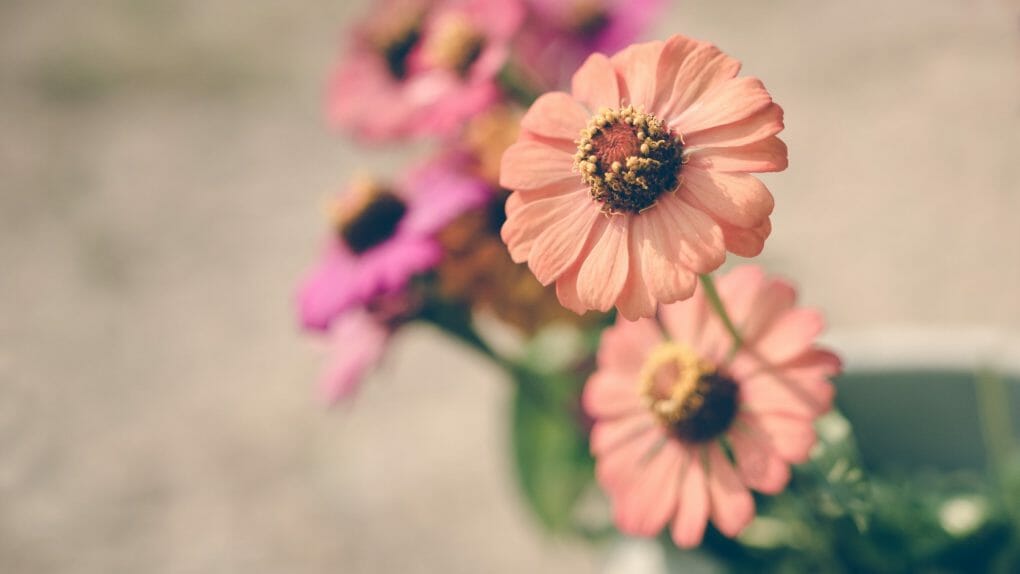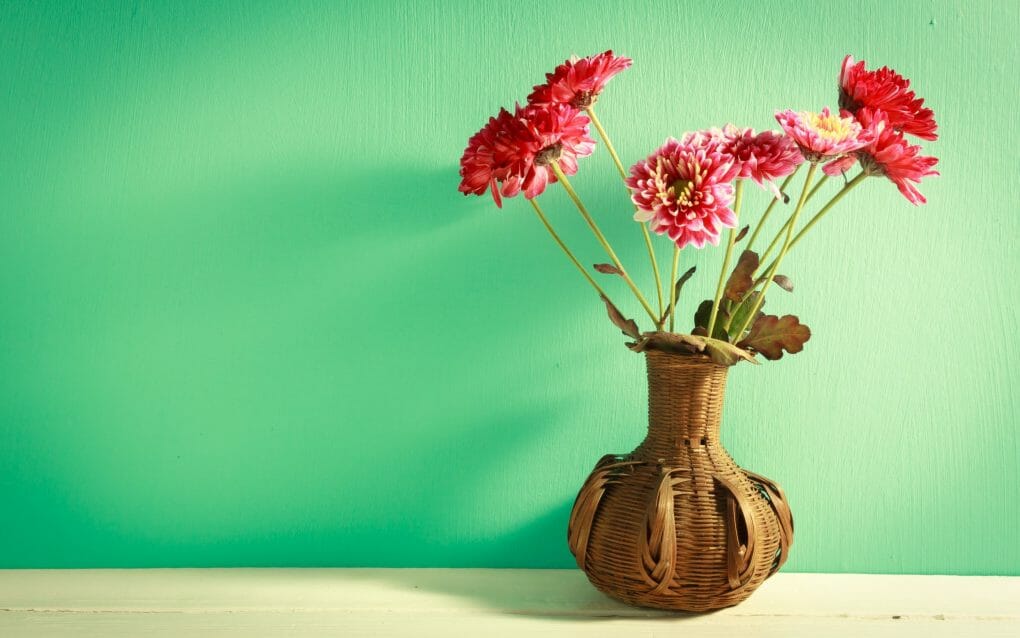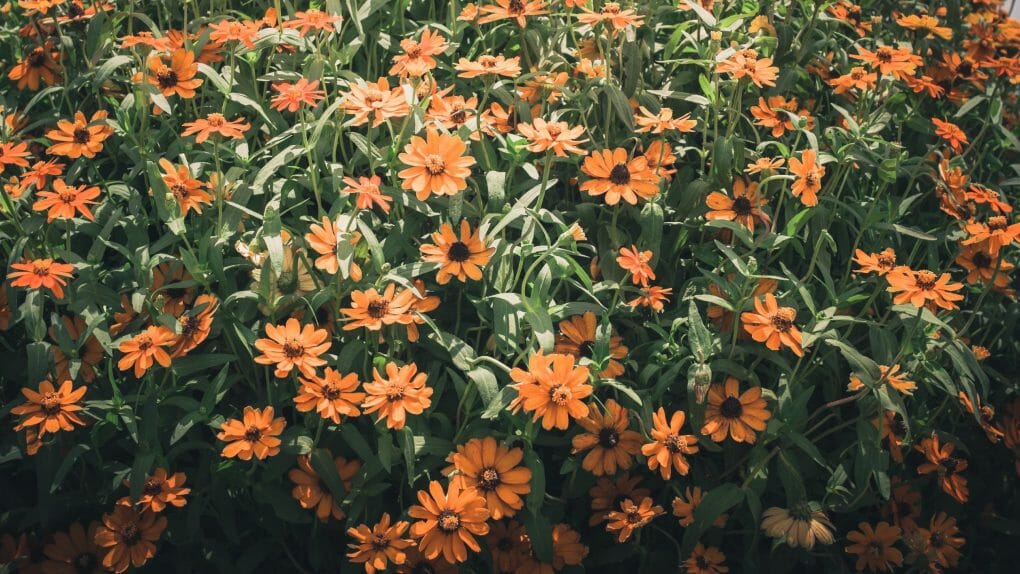Zinnias in Containers —How to Grow Them Properly
Zinnias are easy to grow in containers, making them a great choice for gardeners with limited space. For example, patio containers can add color and greenery if your garden space is limited. If your yard receives little sunlight, your zinnias can be moved into a container to catch the sun. And you can even grow these lovely flowers indoors in the winter using pots, brightening the gloomier months.

They can be planted in many soil types and tolerate partial shade well. They grow quickly, so they’re a great choice if you’re looking for an easy-to-manage plant that will provide years of colorful beauty. If you opt for pot growing, give your zinnias plenty of water and fertilizer. Once they reach maturity, remove them from the pot using sharp pruning shears or scissors so they don’t become overcrowded in their new home.
Table of Contents
Growing Potted Zinnias
Choosing the Right Variety
There are many zinnias, so finding the right variety for your climate and garden space is important. For example, some varieties are best grown in warm climates, while others do well in cooler climates. Look for plants with a dense flower head that is brightly colored.
Choosing Pots for Zinnias
Size
Zinnias prefer containers at least 12 inches in diameter, but they can also be grown in pots as small as 6 inches. Still, you don’t have to stop there. You can easily grow a lot of zinnias in one pot to make it look full and lush. Three plants can live in a 10-inch pot. A 14-inch pot, on the other hand, can hold five. When choosing a pot for your zinnias, consider the soil dimensions and type you’ll use. Choose a pot with good drainage so water doesn’t accumulate on the surface and root rot won’t set in. Ensure the pot has room to grow (at least 12 inches), allowing enough space for roots to spread out without being crowded. If growing zinnias indoors during winter, choose a bright container to improve their appearance.
Design of the Material
Zinnias are not material-specific. They grow well in any container if there is sufficient space for their growth. You can choose from plastic, ceramic, and even recycled wood containers. Additionally, these plants thrive in hanging baskets and window sill planters. Ensure the container has a minimum width of 6 inches to accommodate the plant. Plants should be grown in ceramic containers to absorb moisture and prevent overwatering.
Drainage Holes
If you are reusing a container that once contained another plant, you must sterilize it. Even brand-new containers may need to be sterilized if stored near other plants. To sterilize the container:
- Soak it in a mixture of water and diluted bleach.
- Dilute the bleach with water to make up only 10 percent of the solution.
- Soak the pot for approximately one hour before rinsing it with water.

Next, you must ensure that your container has sufficient drainage. If you purchased your containers from a local garden center, they likely already have drainage holes. However, if you use a decorative container or repurposed pot, you may need to drill additional holes.
Ensure that there is at least one hole for water to escape. You can drill a few additional holes around the pot’s perimeter to be safe.
Soil
Zinnias will do well with mixing half potting soil and half compost. You can also use all-purpose plant food. Remember to add water when using these fertilizers, as they are not explicitly designed for plants.
Sunlight
Zinnias love plenty of sunlight and will benefit from planting it in an area that receives at least 6 hours of daily. You can place your zinnias near a window or patio door to ensure they receive the optimum light.
Air Circulation
Make sure that there is adequate air circulation in your container. Make sure to shake the pot often so that the plants get a good amount of oxygen. Fungus and disease pose the greatest threat to many gardeners who cultivate zinnia. When excess water cannot evaporate from the soil, these problems manifest.
There is a strong correlation between sun exposure and this. However, ventilation is equally important. Make sure your containers aren’t jammed together. It’s crucial if your plants won’t get enough direct sunlight.
Provide the plants with a healthy amount of air circulation all around them. Air must circulate freely throughout the plant to increase evaporation and maintain relatively dry soil.
You must learn how to space plants in containers properly. When planting seeds, be sure to follow the instructions on the packaging.
Water
To bloom, zinnias require a lot of water. Due to their high water needs, these plants thrive in consistently damp conditions.
Don’t want to overwater your plant or otherwise hinder its development. The challenge is determining how much water is right for maintaining a healthy soil environment.
Zinnias require about an inch of water once every five to seven days. Dependent on the local climate, it could be more or less. Your plant could require more frequent watering in scorching weather.
Make sure the soil is in good shape before you water the plant. Maintaining a soil moisture level of at least 6 inches is recommended. For young plants, this is crucial. Once zinnias have become established, they can better withstand dry soil conditions. No matter what, though, it’s best to keep the soil moist for maximum growth.
Aim the stream of water directly at the soil when watering the plant. Be careful not to soak the plants’ foliage and blossoms. Doing so will only serve to spread fungal spores.
Pruning
Since it grows every year, pruning isn’t a big deal. Zinnias aren’t like perennials. They don’t need to be pruned all the time to do well the next time they grow. After a year, they are gone. Still, you can control how the plant uses its energy by doing light pruning.
The best way to prune zinnias is to cut off the flower heads. This is what you do with flowers that have died. Wait until the flower looks like it’s about to fall off after it blooms. If this happens, you should cut the bud.

By cutting off the flower heads, you can stop seeds from forming. It tricks the plant into making more flowers, which could make it bloom longer. It also makes the plant look a little bit cleaner.
If you have a taller variety, you can change how the plant grows by pruning it. If you pinch the plant’s tip when it’s still young, it won’t grow too tall. Instead, the plant will put all of its efforts into growing sideways.
It will lead to more branches. This makes the plant look like it has more leaves.
Be careful when using this method. Pinch-cutting tall plants can also hurt them. It may take longer to bloom in places where summers are cooler.
Fertilizer
Zinnias can benefit from being fertilized. We want to grow a plant that is full and always has beautiful flowers. You can get those results by using fertilizer.
But you should not stop there. They only need a little fertilizer. They already make a lot of flowers, and compared to other flowers, they grow pretty fast. Too much fertilizer could have some bad effects.
Kevin from Gardening Mentor says to use a 5-10-5 formula to put down fertilizer. These numbers show how much nitrogen, potassium, and phosphorus are in the product. The low nitrogen and potassium in a 5-10-5 formula are good for zinnias.
Your plant still needs nitrogen and potassium, but phosphorus will help it grow more. Phosphorus helps turn nutrients into energy that plants can use.
When making the fertilizer, you must water it to a quarter of its original strength. Cut the suggested dose in half or add four times as much water. If you use full-strength fertilizer, your plants will grow too much.
When the plant is still young, use the diluted fertilizer. Plan to feed your zinnia when the seedling is only 4 inches tall. At this point, the plant could use a lot of extra nutrients.
In the middle of the summer, you can give the zinnias a second dose of fertilizer. This will give the plant new life and ensure it keeps making food. When making the fertilizer, you must water it to a quarter of its original strength. Cut the suggested dose in half or add four times as much water. If you use full-strength fertilizer, your plants will grow too much.
When the plant is still young, use the diluted fertilizer. Plan to feed your zinnia when the seedling is only 4 inches tall. At this point, the plant could use a lot of extra nutrients.
In the middle of the summer, you can give the zinnias a second dose of fertilizer. This will give the plant new life and ensure it keeps making food. Stick to fertilizer that dissolves in water for ease of use. You can use the solution to water your plant to make things easy.
Propagating Zinnias in Pots
You can plant them in the pot if you don’t want them to grow too far. It’s easy to grow them in the pot. This plant with flowers doesn’t like to be moved. So, you need to determine what size plant you want to grow first.
Follow these steps to start them from seeds in pots.
- Choose a pot that is about the right size and has potting mix soil and a good drainage hole.
- Take two or three of the fresh seeds. You can pick any kind you like.
- Plant the seeds in the ground about 2 to 3 inches deep. Don’t plant them too deeply; coming up through the soil will take a while.
- Put the container where it will get enough light, like on a windowsill.
- Keep the soil moist by watering it. Don’t overwater them.
- After 7-8 days, the seedling will push through the soil.
- You can also grow new plants by cutting stems. The steps are the same, but instead of seeds, you should use stem cuttings of about the same size.
